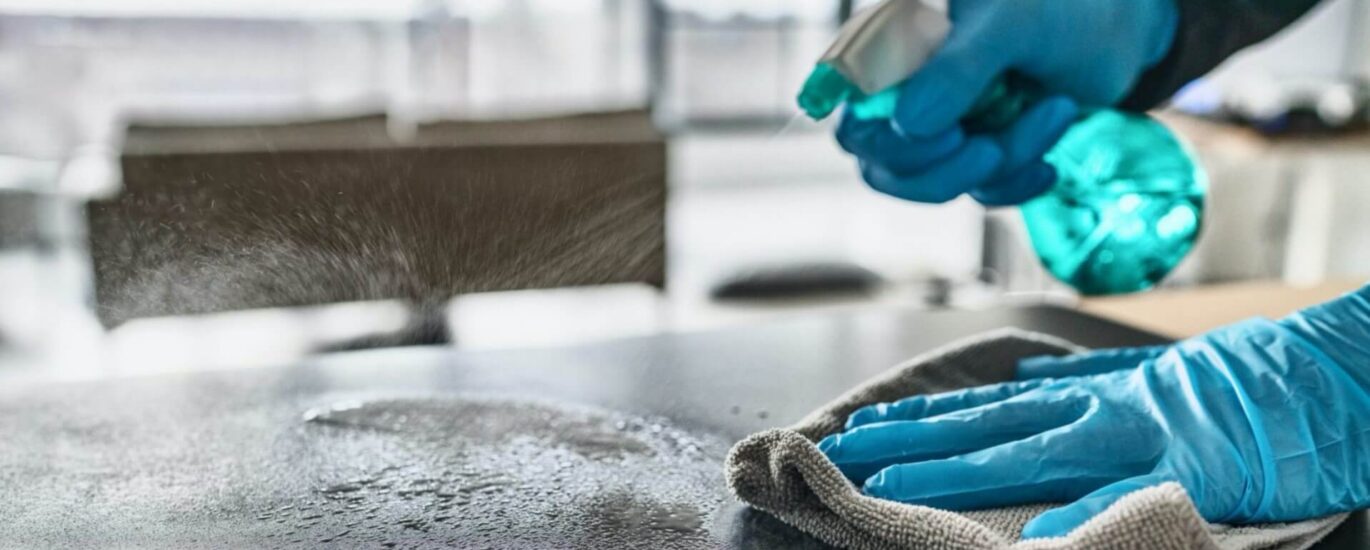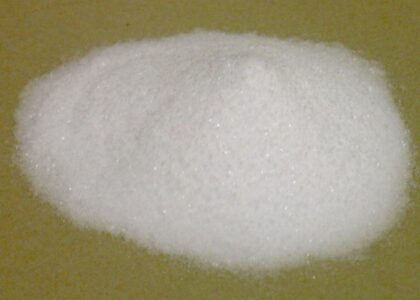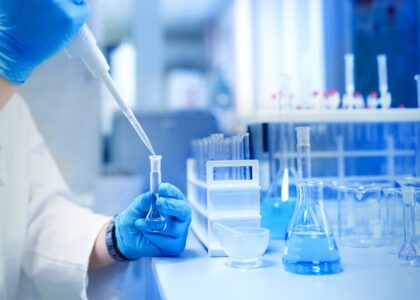Surface disinfectant chemicals are vital substances used to kill or inactivate harmful microorganisms on various surfaces. These chemicals play a crucial role in maintaining hygiene and preventing the spread of infectious diseases. Surface disinfectants are formulated to be effective against a wide range of pathogens, including bacteria, viruses, and fungi. They are used in healthcare facilities, public spaces, households, and various industries to ensure clean and safe environments.
Rising healthcare costs and heightened consumer hygiene consciousness are the two main market drivers. In addition, the market is growing as more infectious diseases like hepatitis, HIV, and other hospital-acquired illnesses are becoming more common. The surface disinfectant chemicals market size is predicted to be worth US$ 3.9 billion in 2023, rising to US$ 5.8 billion by 2033. The demand is expected to grow at a significant CAGR of 4.1% during the forecast period.
Leading manufacturers of surface disinfectant chemicals have a tonne of opportunities due to the advent of cutting-edge disinfection solutions and expanding economies. Due to the rising risk of disinfectants to humans, numerous start-ups in the surface disinfectant chemicals industry globally have created a variety of alternatives to traditional chemical-based decontaminants.
As individuals become more aware of the various illnesses connected to healthcare, it is projected that the demand for surface disinfectant chemicals would increase. The market is also anticipated to grow in the upcoming years, as a result of altering lifestyles and a rise in surgical procedures.
Manufacturers have historically been most worried about issues like government restrictions on the use of synthetic chemicals and a movement in consumer preference toward environmentally friendly products.
However, the market is being expanded overall due to the continually expanding demand from different industries and the implementation of stringent safety and hygiene standards. The demand for surface disinfection chemicals is largely driven by end users in the commercial and institutional sectors.
Download our Sample Report to discover how recent industry developments, like: https://www.futuremarketinsights.com/reports/sample/rep-gb-5341
Key Takeaways in Surface Disinfectant Chemicals Market
- The UK surface disinfectant chemicals market is anticipated to expand at a CAGR of 3.4% over the anticipated time frame. By 2033, it is anticipated that the industry in the UK is likely to surpass US$ 166.6 billion.
- The surface disinfectant chemicals market increased at a 4.6% CAGR between 2017 and 2022, citing FMI’s study.
- The surface disinfectant chemicals market in the US is anticipated to expand at an adequate CAGR of 3.8%. By 2033, it is expected that the US market would have contributed more than US$ 1.0 billion in revenue.
- Japan’s surface disinfectant chemicals market sector is estimated to exceed US$ 320 million by 2033.
- Between 2023 and 2033, the surface disinfectant chemicals market is likely to increase in South Korea at 4.6% CAGR, respectively.
- Quaternary ammonium compounds dominate the surface disinfectant chemicals market, with a CAGR of 4.1% by 2033.
- Based on end user, commercial and institutional segments dominate the surface disinfectant chemicals market, with the CAGR of 4.2% by 2033.
Competitive Analysis
Utilizing the rise in global demand, companies in the surface disinfectant chemicals market are working to enhance production capacity through strategic acquisitions and partnerships with other producers.
Leading surface disinfectant chemical producers are focusing on creating fresh marketing strategies and utilizing cutting-edge technologies to increase their clientele. Leading manufacturers of surface disinfection chemicals are focusing on regulating and optimizing supply efficiency in order to stay competitive in the market. They are doing this by boosting their productivity, operational effectiveness, and lead time reduction.
- Lanxess made a formal announcement in 2020 that it intended to increase its capacity for producing oxone monopersulfate, a crucial component in disinfection formulations, by about 50%.
- Lonza increased its microbiological capacity in 2020 and extended its long-term collaboration wi th Servier for the production of L-asparaginase API.
Are you looking for deep information related to the latest trends, drivers, and challenges? Speak to Our Analyst: https://www.futuremarketinsights.com/ask-question/rep-gb-5341
Key players
- Evonik Industries AG
- LANXESS AG
- Solvay S.A.
- BASF SE
- Lonza Group AG
- Dow Inc.
- Arkema SA
- Mitsubishi Gas Chemical Company, Inc.
- Hodogaya Chemical Co., Ltd.
- Olin Corporation
- Hansol Chemical Co., Ltd.
- Dishman Carbogen Amics Ltd.
Key Segments
By Product Type:
- Quaternary Ammonium Compound
- Alcohols & Aldehydes
- Phenolic Compounds
- Halogens
- Oxidizing Agents
By End Use:
- Domestic
- Commercial & Institutional
- Industrial
By Region:
- North America
- Latin America
- Europe
- East Asia
- South Asia Pacific
- Middle East and Africa
About FMI
Future Market Insights, Inc. (ESOMAR certified, Stevie Award – recipient market research organization and a member of Greater New York Chamber of Commerce) provides in-depth insights into governing factors elevating the demand in the market. It discloses opportunities that will favor the market growth in various segments on the basis of Source, Application, Sales Channel and End Use over the next 10-years.
Contact Us:
Future Market Insights Inc.
Christiana Corporate, 200 Continental Drive,
Suite 401, Newark, Delaware – 19713, USA
T: +1-845-579-5705
For Sales Enquiries: sales@futuremarketinsights.com
LinkedIn| Twitter| Blogs




